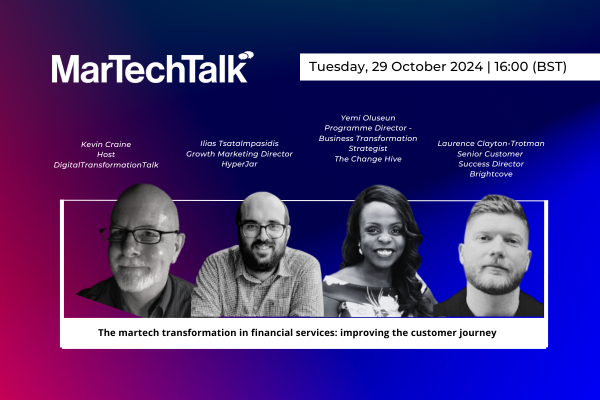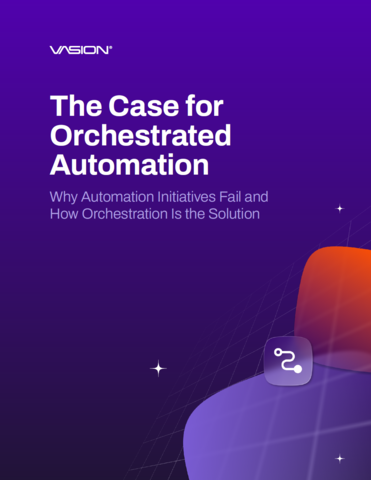Transformation through AI

Kit Cox at Enate argues that choosing an AI solution is more than just tech – it’s transformation
AI is everywhere, and it’s easy to feel the pressure to adopt the latest shiny tool. But let’s be honest, AI isn’t about jumping on trends or adding a widget to your existing stack just for the sake of it. It’s fundamentally about transforming how your business works from the inside out, making things faster, smarter, and more efficient.
Despite this, many businesses stumble because they haven’t taken the time to align on what they want to get out of a solution.
Mitigating risks, for example, is a huge decision factor when looking at tools. According to a recent PWC report, the top reason for businesses not investing in responsible AI (29%) was “difficulty quantifying risk mitigation,” closely followed by not seeing responsible AI as a "budgetary priority" and unclear leadership values when it comes to AI.
It’s not that businesses don’t want to innovate, but there is still a blind spot when it comes to doing so safely which is halting progress for many organisations. Torn between the peer pressure of AI innovation, and the potential damage if not done correctly, many businesses are finding themselves stuck between a rock and a hard place.
Knowing exactly what you want to achieve with AI and what to look for in a tool should be the first step. From there, you can make the whole process much more straightforward. AI is only as good as its application. Misaligned or vague goals will lead to wasted time and resources. So, what should you be looking for in an AI solution? Let’s break it down.
Start where AI adds the most value
When introducing AI, begin with areas that involve highly repetitive and rules-based tasks. Departments like finance or HR often handle such processes. For instance, invoice processing, payroll, or routine data entry. AI thrives in environments where tasks follow a predictable pattern, freeing up employees to focus on more strategic work.
By starting with these use cases, you can achieve quick wins and build momentum for broader AI adoption across the business.
Vendor reputation matters
Reputation is everything when it comes to selecting an AI vendor. It’s important to do your homework and find out how long the vendor has been operating, their track record in your industry, and what other businesses are saying about their product. Look beyond the marketing buzzwords and focus on real-world results.
A trusted vendor will be able to point to case studies or testimonials that demonstrate tangible outcomes. They should provide clear guidance on how their tool will evolve alongside your business and offer transparent customer support. Doing due diligence reduces the risk of problems down the road and helps ensure that your AI solution will deliver long-term value.
Integrate wisely
One of the most critical aspects of choosing an AI tool is its ability to integrate easily with your existing systems. A tool that requires heavy-lift reconfiguration or demands a complete overhaul of your current infrastructure can quickly become more trouble than it’s worth. The smoother the integration, the faster you can begin realising benefits from your AI investment.
Look for AI solutions that plug directly into your tech stack and work across the systems your teams already rely on. This reduces friction, minimises disruption, and ensures that the AI starts delivering value from day one. Whether you’re using legacy software or modern cloud-based platforms, the AI tool you select should be flexible enough to complement, not complicate, your environment.
Implement quickly and offer adequate training
Speed matters when you’re investing in AI. No one wants to wait years to see results, and if the process drags, you’ll end up lagging behind competitors. Look for a provider who can demonstrate successful rollouts within six weeks. These conversations should happen upfront, so all stakeholders know what timelines to expect.
Hands-on support with training, documentation, and troubleshooting are also key to help your team adjust. Begin with focused use cases to demonstrate impact, then expand the rollout as success is proven.
Request an ROI timeline
Before committing to any AI tool, make sure the vendor can show measurable ROI timelines. This could come in the form of efficiency gains, cost savings, or improvements in accuracy and decision-making.
Reliable vendors will be able to offer data and metrics from previous clients to back up their claims. This evidence will give you a clear picture of what to expect in terms of return on investment (ROI) and how quickly the tool will start delivering value.
Understand the costs involved
AI tools can come with complex pricing structures that aren’t always immediately clear. Beyond the initial purchase or subscription cost, there are often additional expenses like maintenance, upgrades, training, and support. These can quickly add up, so it’s important to fully understand the total cost of ownership (TCO) before making your decision.
Clarify what’s included in the pricing model. For example, are software updates and support covered, or will they incur extra costs? By understanding the full cost of implementing and maintaining the tool, you can make a more informed decision about whether the investment aligns with your budget and expected ROI.
Foster a transformation mindset
Once you’ve chosen a provider, the real work begins. AI isn’t just about automating a few tasks: It’s about a larger, strategic transformation. To succeed, you need to define your long-term goals and take a comprehensive look at how all the work flows through your business.
If the systems are disjointed and manual, you should probably look at adopting an orchestration tool. After all, as I always tell clients: You can’t manage what you can’t see, and you can’t automate what you can’t manage.
Ask yourself: Where do you lack control and transparency in your organisation? Is work being delivered on time? Are processes efficient? By addressing these questions, you’ll be able to focus on the areas where orchestration and AI can deliver the most value and set yourself up for a successful transformation.
Prioritise stakeholder buy-in
AI implementation, especially at scale, is a change management exercise. You’re not just updating a tool; you’re fundamentally changing how people work. This is why securing buy-in from key stakeholders, particularly across your operations and IT teams, is critical. Aligning everyone around a shared vision will ensure the transformation goes smoothly.
Remember, AI is designed to enhance your workforce, not replace it. The goal is to empower employees with better tools and more efficient processes. Securing leadership support will help set the tone for success throughout the organisation.
Be flexible
Finally, be flexible. No implementation goes exactly as planned, and you’ll likely need to adjust as you go. A decent provider will support you in refining your approach as the rollout progresses, ensuring your AI solution continues to meet your evolving needs.
Fundamentally, technology is designed to solve business challenges and streamline processes. Start with clearly defined objectives, find a tool that fits your needs, and prioritise integration, speed, and team buy-in. Keep your focus on the long-term transformation, not just the short-term tech.
Kit Cox is the Founder and CTO of Enate
Main image courtesy of iStockPhoto.com and Aree Sarak

Business Reporter Team
Most Viewed
Winston House, 3rd Floor, Units 306-309, 2-4 Dollis Park, London, N3 1HF
23-29 Hendon Lane, London, N3 1RT
020 8349 4363
© 2024, Lyonsdown Limited. Business Reporter® is a registered trademark of Lyonsdown Ltd. VAT registration number: 830519543





